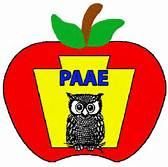PBL
3- Identify 3 relevant connections to your student teaching internships
1. When thinking about student teaching I want to find ways for my students to work their way up Bloom's taxonomy and through problem-based learning that can be accomplished. Trying to incorporate these methods into my classroom will help students to control their learning more and not just memorize facts.
2. Another connection to student teaching is how in problem-based learning they will have to solve a problem. This transfers well to life with career skills and having students be equipped to deal with problems. As one of my goals in student teaching helping students be prepared for what comes next in their life and this is one way in the classroom I can do that.
3. The one article talks about the different of a project and actual project based learning so as I think about the spring a question at the front of my mind will be how to I am making this a project to foster learning rather than just something students are forced to do.
2- Identify 2 connections to other courses that are part of your #TeachAg Journey
1. One connection when we are talking about problem-based learning is Bloom's, which we talk about about in 412 but also in many other AEE classes. Problem-based learning helps to bring active learning in and facilitate students discovering knowledge on their own. This makes me think of Bloom's when we are talking about how to get students to move up to the high levels and this method of teaching would do just that.
2. In 412, we talk a lot about reflection and how it is important for us as educators to facilitate reflection since high schoolers tend to skip that on their own. My SEED semester also did a good job showcasing the the importance of reflection. So this is why I feel like it was very beneficial when they were reevaluating the elements of PBL they added in reflection as its own element.
1- the Triangulated Connection
My resource is an article that breaks down in six steps how to bring problem-based learning into your classroom, which while this was touched on in some of the reading I think, this article does a nice just on simplifying things and giving us a little different perspective. I really liked this article because knowing about all of these tools, methods, and theories are great but if we can not implement them then there is no point, so this article can be used as a tool in applying problem-based learning to our classrooms.
Vincent R. Genareo PhD and Renee Lyons. (2017, September 8). Problem-based learning: Six steps to design, implement, and assess. Faculty Focus | Higher Ed Teaching & Learning. Retrieved October 3, 2021, from https://www.facultyfocus.com/articles/course-design-ideas/problem-based-learning-six-steps-to-design-implement-and-assess/.



Lacey, such an awesome post! I really zero'd in on the blooms part (because I love Bloom) and i think you're definitely right in saying that PBL does a fantastic job moving us up the taxonomy!
ReplyDelete